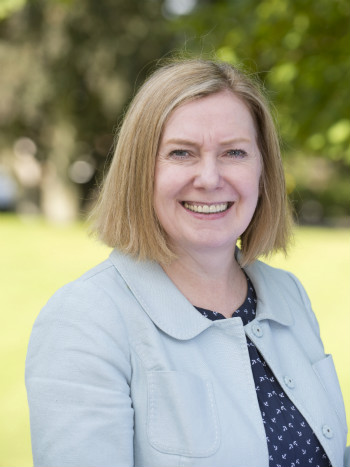Professor Anna Leask writes for The Scotsman
Visitor attractions are often the very reason why we go to a particular destination, the first thing we consider when we want to explore, and our reason for staying longer.
They’re also hugely important to their local populations, and bolster the appeal of a place as somewhere to live, work and study.
However, a combination of factors mean Scotland’s 1000 or so managed sites - including castles, museums, science centres and visitor centres - now face major challenges as they battle to maintain their share of tourism spend and manage fluctuating visitor demand within constrained financial and spatial resources.

Brexit, the difficulties of managing increasingly multi-generational workforces and a shrinking labour pool with limited language skills are all likely to impact on attractions’ ability to appeal to and retain suitably skilled staff.
And this may in turn impact on their ability to attract new visitor groups and meet the growing needs of a diverse and demanding customer base.
On the face of it, the sector is currently booming. New large-scale developments include the Tennent’s Visitor Centre in Glasgow, the Macallan Distillery Visitor Centre in Moray and the V&A in Dundee.
In addition, there has been consistent reinvestment across the sector, for example at Wee Hailes at Newhailes and at the National Museum of Scotland. Diageo recently announced investment of £150 million across their whisky distillery centres and for the development of a state of the art Johnnie Walker Experience in Edinburgh.
More than 30 million visits were recorded at attractions in 2017, an increase of 9.7% on the previous year and part of an upward trend showing an increase of 25% over the past five years.
Increased activity is seen across most types of attractions, particularly in Castles, with a report recording 35% of Scottish adults visiting a historical or archaeological place in 2017 (up 28% since 2012), and Distillery visitor centres (now contributing 1.9 million visits per annum).
Markets have also broadened, with big increases in the number of young people engaging with heritage and new international audiences brought in by the growing number of direct air routes; huge interest in sites associated with TV and film productions such as Outlander; new ‘Late’ events at museums and gardens; and new trail developments such as the North Coast 500.
But is this growth sustainable and does the supply of attractions suit the market demand in terms of growing visitor expectations and the demand for authentic experiences? Or might the new developments simply displace existing visitors, rather than adding to the pool?
Concerns also exist that the gradual increase in the price of attraction admissions, often required to cover the costs of investment in light of declining traditional funding sources, might lead to the exclusion of some parts of the population.
Without growth in the overall number of visitors, the development of new, high-quality experiences will further increase the competition for visitors within destinations and may create division between the operators with differing funding routes, operational restrictions and flexibility. This might in turn lead to too much demand for certain attractions, with queues and congestion undermining the visitor experience, or to the demise of attractions that are unable to appeal to enough visitors.
The role of visitor-facing staff is crucial in delivering quality experiences that engage visitors and lead to word of mouth recommendations and repeat visits. A recent study by Edinburgh Napier University, on behalf of the Association of Scottish Visitor Attractions, found the majority of attraction employees are very loyal to the sector and find their job enjoyable and fulfilling.
However, Brexit-related uncertainties and the decreasing labour pool are likely to take their toll. It would appear that while visitor attractions are currently enjoying a boost in both supply and demand for their experiences, there is a need for continued and increased investment in the recruitment and retention of employees, in addition to continued investment in the development of facilities and experiences that are suitable for all potential visitors in their international, national and local populations.
A challenging balance of activities is required, so that the visitor experience is not compromised by broader challenges and competition within individual destinations and so that visitor attractions can achieve a broad range of financial, education and community outcomes.
In focusing on individual visitor experience, as guided by the visitor-facing employee, attractions could contribute to the overall sustainable development of destinations, not just in terms of visitor volume and value, but also by offering high-quality visitor engagement to tourists and locals alike.
This article originally appeared in The Scotsman newspaper.